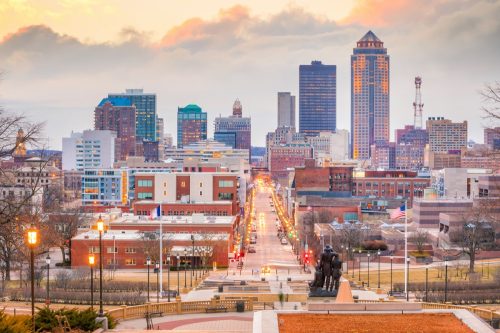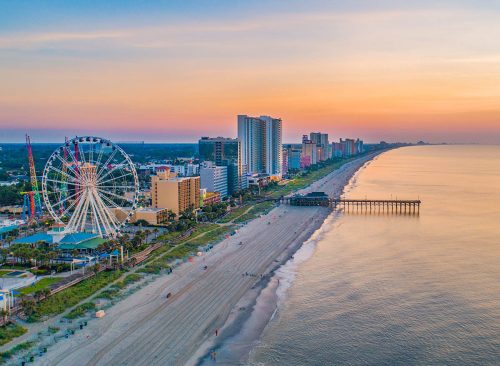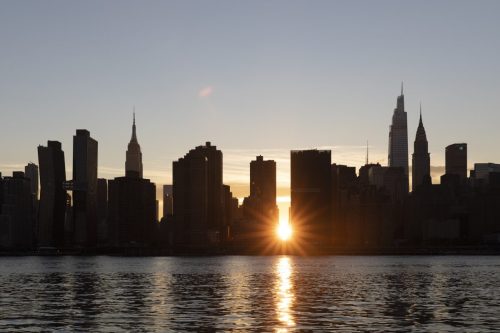Above-Average Temps Warming Entire U.S. Next Week—How It’ll Affect Your Region

Most of the U.S. has been huddled under blankets amid frigid temperatures this week. If you’re already sick of all the snow, ice, and arctic air, you may be in luck. A major weather pattern change is expected to reverse trends next week, according to the National Weather Service’s (NWS) Climate Prediction Center (CPC). The CPC just issued its latest temperature outlook, predicting that above-average temps will be warming the entire country through the end of the month. Read on to find out more about how this “transition to a warmer pattern” will affect your region.
RELATED: Winter Storm Bringing Another 8 Inches of Snow to These Regions.
1
The West

This new warming trend is expected to begin as early as Jan. 21 in parts of the West, CNN reported. By the last week of January, the CPC predicts that most of this region will have a 60 to 80 percent chance of experiencing above-average temperatures.
But that doesn’t mean you’ll be staying dry. The warmer conditions arrive along with storm systems hitting the West next week, which is expected to bring higher rain levels to states like California, according to The Weather Channel. The highest elevations will also see increased snowfall.
RELATED: Why You Should Never Use Your GPS During a Snowstorm, Officials Warn.
2
The Midwest

The most dramatic temperature changes are likely to hit midweek throughout the central part of the country, according to CNN. Some areas in the Midwest are expected to shift from temperatures that were 30 to 40 degrees below average last Sunday to temperatures that are 10 to 20 degrees above average by Jan. 24.
Cities such as Des Moines, Iowa, and Minneapolis, Minnesota, are set to see 40- to 50-degree temperature swings‚ making things feel much more like March than like January.
RELATED: Weather Predictions Keep Changing—What the Unpredictable Shifts Mean for You.
3
The South

Another blast of cold air is expected to hit the East Coast this weekend. But by early next week, freezing temperatures will have already started to thaw in the South, according to The Weather Channel.
This region is likely to see highs in the 50 and 60s on Monday and Tuesday. Then by mid-week, much of the South will be back in the 60s and 70s.
4
The Northeast

The Northeast is not going to be left out of this warming trend. By the middle of next week, highs in the 40s are expected to be common in places such as Indianapolis, Cleveland, Philadelphia, and New York City, according to CNN.
This will make the region feel like it’s in late February rather than the last weeks of January.
RELATED: For more up-to-date information, sign up for our daily newsletter.